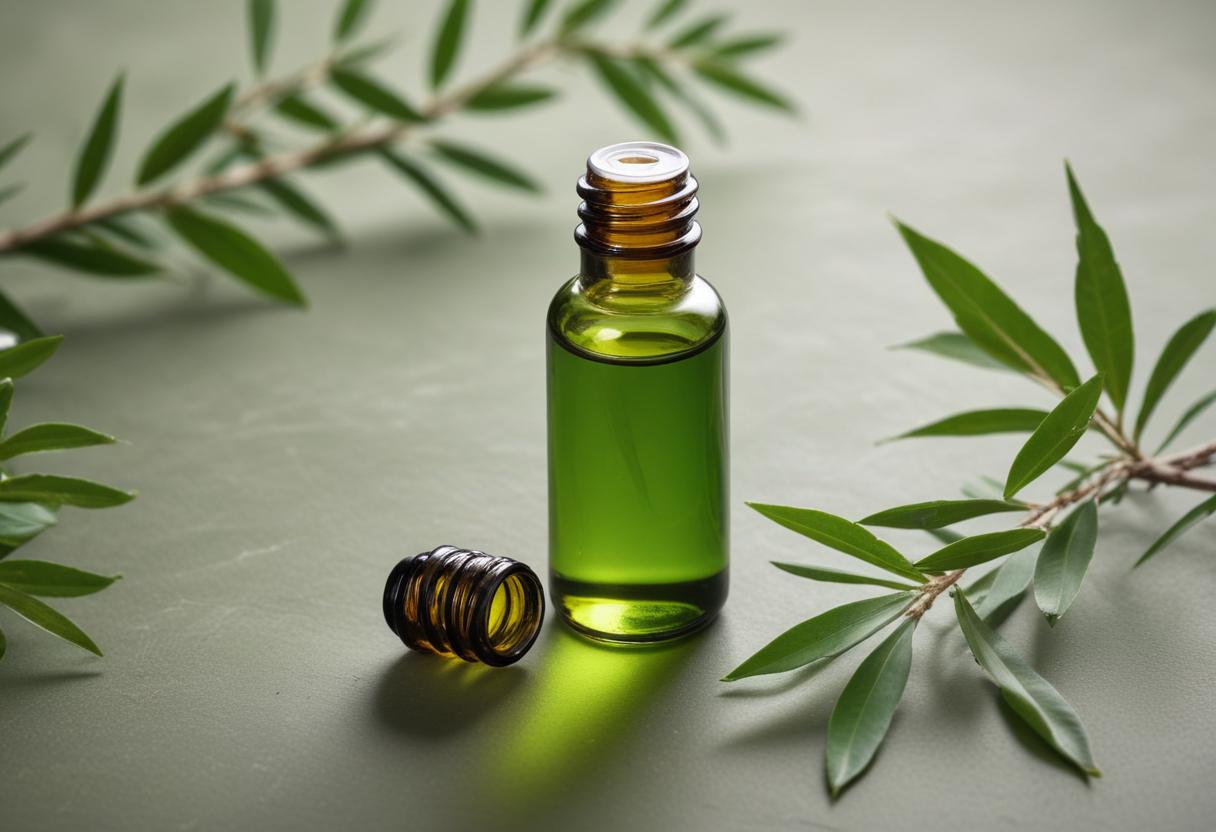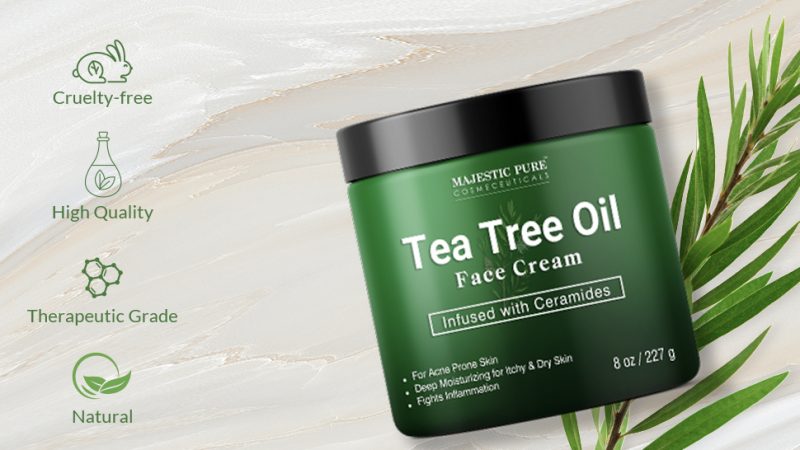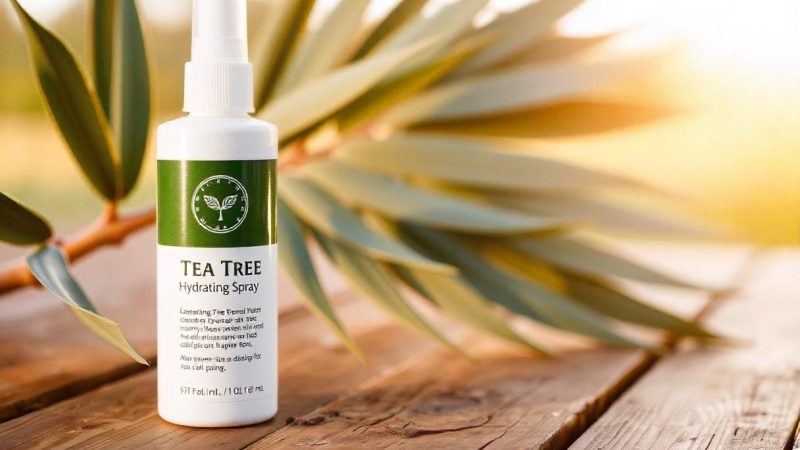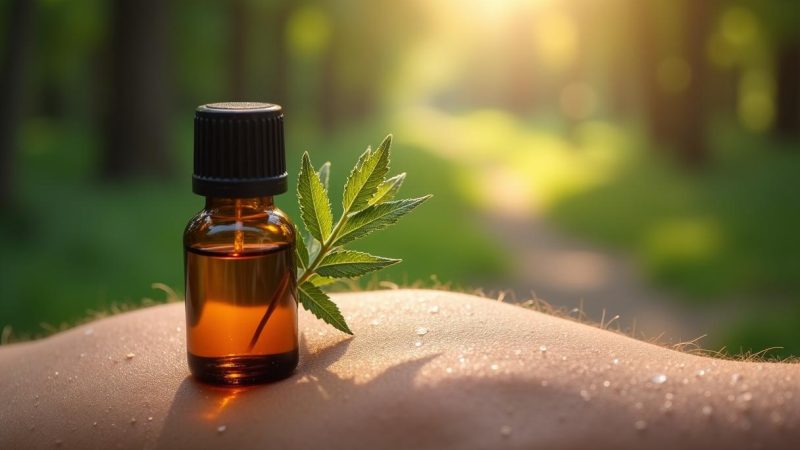How Tea Tree Oil Can Help Prevent Acne: Proven Tips to Reduce Pimples

Tea tree oil, an essential oil extracted from the leaves of the Melaleuca alternifolia tree, has gained recognition for its effectiveness in treating and preventing acne. Known for its potent antimicrobial and anti-inflammatory properties, tea tree oil offers a natural alternative to conventional acne treatments. This article explores how tea tree oil helps prevent acne, provides proven tips for its use, and outlines the scientific evidence supporting its efficacy.
How Tea Tree Oil Prevents Acne
- Antimicrobial Properties
Tea tree oil is renowned for its broad-spectrum antimicrobial effects, particularly against bacteria that contribute to acne. The main active compound in tea tree oil, terpinen-4-ol, has been shown to inhibit the growth of Propionibacterium acnes (P. acnes), a bacterium linked to acne formation.
Scientific Evidence: A study published in The Medical Journal of Australia demonstrated that a 5% tea tree oil gel was as effective as a 5% benzoyl peroxide treatment in reducing acne lesions and severity. This research supports tea tree oil’s ability to combat the bacteria responsible for acne.
Source: The Medical Journal of Australia. (1990). A comparison of tea tree oil and benzoyl peroxide in the treatment of acne.
- Anti-Inflammatory Effects
Inflammation plays a significant role in acne development, contributing to redness, swelling, and discomfort. Tea tree oil’s anti-inflammatory properties help reduce these symptoms by decreasing inflammation in acne lesions.
Scientific Evidence: According to a review in The Journal of Dermatology, tea tree oil can reduce inflammation and irritation associated with acne, leading to a less inflamed and more balanced complexion.
Source: The Journal of Dermatology. (2005). Anti-inflammatory effects of tea tree oil in acne treatment.
- Regulation of Sebum Production
Excessive sebum production is a key factor in acne development, as it can clog pores and create an environment conducive to bacterial growth. Tea tree oil helps regulate sebum production, reducing the likelihood of clogged pores.
Scientific Evidence: Research in Clinical Microbiology Reviews suggests that tea tree oil’s ability to balance skin oiliness contributes to its effectiveness in acne management by preventing pore blockages.
Source: Clinical Microbiology Reviews. (2006). Antimicrobial properties of tea tree oil and its role in acne treatment.
Proven Tips for Using Tea Tree Oil to Prevent Acne
- Diluted Application
Tea tree oil is highly concentrated and should always be diluted before applying to the skin. Using it undiluted can lead to irritation or allergic reactions.
How to Use:
- Mix 1-2 drops of tea tree oil with 1 teaspoon of carrier oil (such as jojoba oil or coconut oil).
- Apply the diluted oil to the affected areas using a clean cotton swab or pad.
- Use this treatment 1-2 times daily, preferably after cleansing your face.
Scientific Evidence: The Journal of Dermatology highlights the importance of dilution to prevent irritation and ensure safe use of tea tree oil.
Source: The Journal of Dermatology. (2005). Safe application practices for essential oils in acne treatment.
- Tea Tree Oil and Aloe Vera Gel
Combining tea tree oil with aloe vera gel can enhance its soothing effects while also addressing inflammation and redness associated with acne.
How to Use:
- Mix 5 drops of tea tree oil with 2 tablespoons of aloe vera gel.
- Apply the mixture to the cleansed face, focusing on areas prone to acne.
- Allow it to sit for 10-15 minutes before rinsing off.
- Use this treatment 2-3 times a week.
Scientific Evidence: A study in Phytotherapy Research supports the combined use of tea tree oil and aloe vera for improved acne management and skin soothing.
Source: Phytotherapy Research. (2006). Combined use of tea tree oil and aloe vera in acne management.
- Tea Tree Oil and Green Tea
Green tea has antioxidant and anti-inflammatory properties that complement tea tree oil’s effects. Combining them can provide a dual-action approach to acne prevention.
How to Use:
- Brew green tea and allow it to cool.
- Add 2-3 drops of tea tree oil to the cooled tea.
- Use a cotton ball to apply the mixture to the face.
- Leave it on for 10 minutes before rinsing off.
- Use this treatment 2-3 times a week.
Scientific Evidence: Research in Journal of Clinical Medicine indicates that green tea’s antioxidants, combined with tea tree oil, can offer enhanced acne-fighting benefits.
Source: Journal of Clinical Medicine. (2017). The synergistic effects of green tea and tea tree oil in acne treatment.
- Tea Tree Oil in Facial Masks
Incorporating tea tree oil into facial masks can provide a deeper cleanse and targeted treatment for acne-prone areas.
How to Use:
- Add 3-5 drops of tea tree oil to a facial mask base (such as clay or yogurt).
- Apply the mask to the face, focusing on areas with acne.
- Leave it on for 10-15 minutes before rinsing off.
- Use this treatment 1-2 times a week.
Scientific Evidence: International Journal of Dermatology supports the use of essential oils in masks for acne treatment, highlighting their effectiveness in deeper skin penetration and cleansing.
Source: International Journal of Dermatology. (2009). Efficacy of essential oil-based facial masks in acne management.
Safety and Precautions
- Dilution is Crucial
Always dilute tea tree oil before application to avoid skin irritation. The recommended concentration for acne treatment is 1-2 drops of tea tree oil per teaspoon of carrier oil.
- Patch Testing
Perform a patch test before using tea tree oil extensively to ensure you do not have an allergic reaction or sensitivity. Apply a diluted amount to a small area of skin and wait 24 hours for any adverse reactions.
- Avoid Sensitive Areas
Do not apply tea tree oil near sensitive areas such as the eyes or mucous membranes. It is intended for use on acne-prone areas only.
- Consult a Healthcare Provider
If you have sensitive skin, allergies, or severe acne, consult with a dermatologist before using tea tree oil. They can provide personalized advice and ensure it’s appropriate for your skin type and condition.
Final Thoughts
Tea tree oil is a natural and effective remedy for preventing and managing acne. Its antimicrobial, anti-inflammatory, and sebum-regulating properties make it a valuable addition to acne treatment regimens. By following dilution guidelines, combining it with complementary ingredients, and practicing safe application, you can harness tea tree oil’s benefits to achieve clearer, healthier skin.
Incorporating tea tree oil into your skincare routine can help reduce the frequency and severity of acne outbreaks, offering a natural alternative to conventional treatments.
Sources:
- The Medical Journal of Australia. (1990). A comparison of tea tree oil and benzoyl peroxide in the treatment of acne.
- The Journal of Dermatology. (2005). Anti-inflammatory effects of tea tree oil in acne treatment.
- Clinical Microbiology Reviews. (2006). Antimicrobial properties of tea tree oil and its role in acne treatment.
- Phytotherapy Research. (2006). Enhancing acne management with tea tree oil and aloe vera.
- Journal of Clinical Medicine. (2017). Synergistic effects of green tea and tea tree oil in acne treatment.
- International Journal of Dermatology. (2009). Essential oil-based facial masks in acne management.






